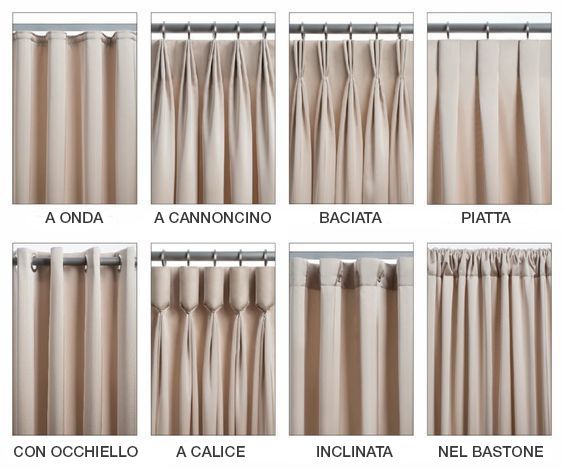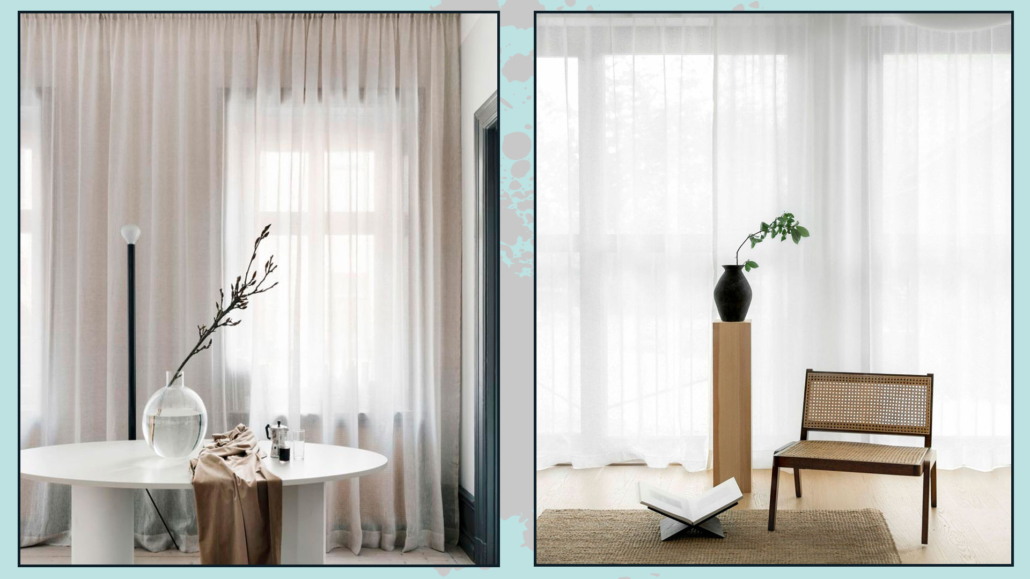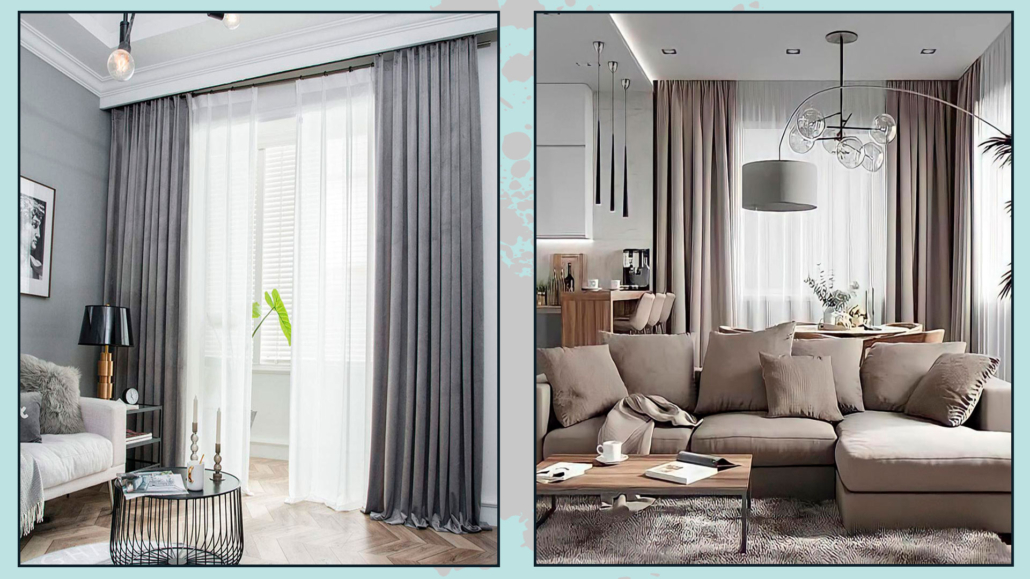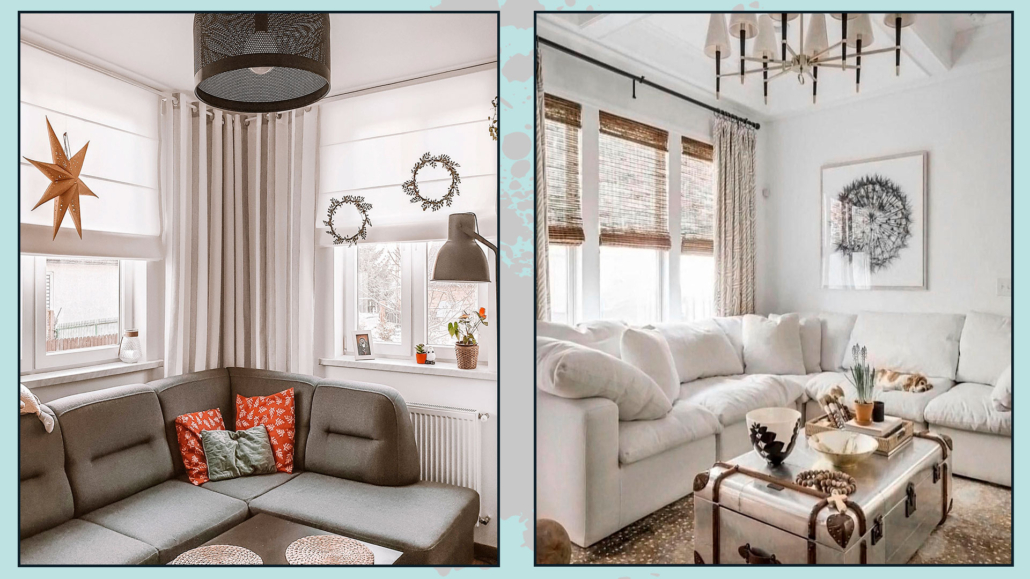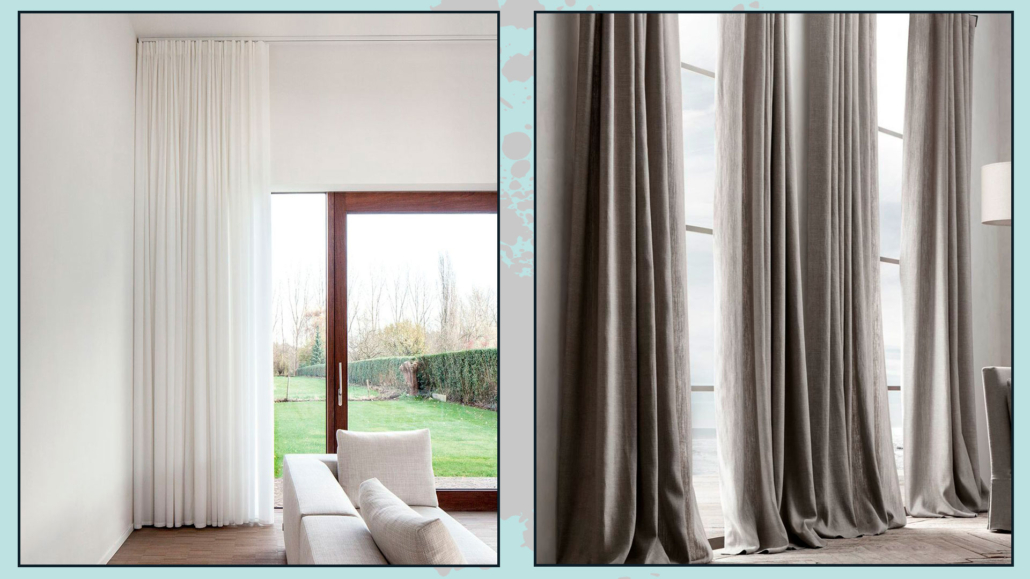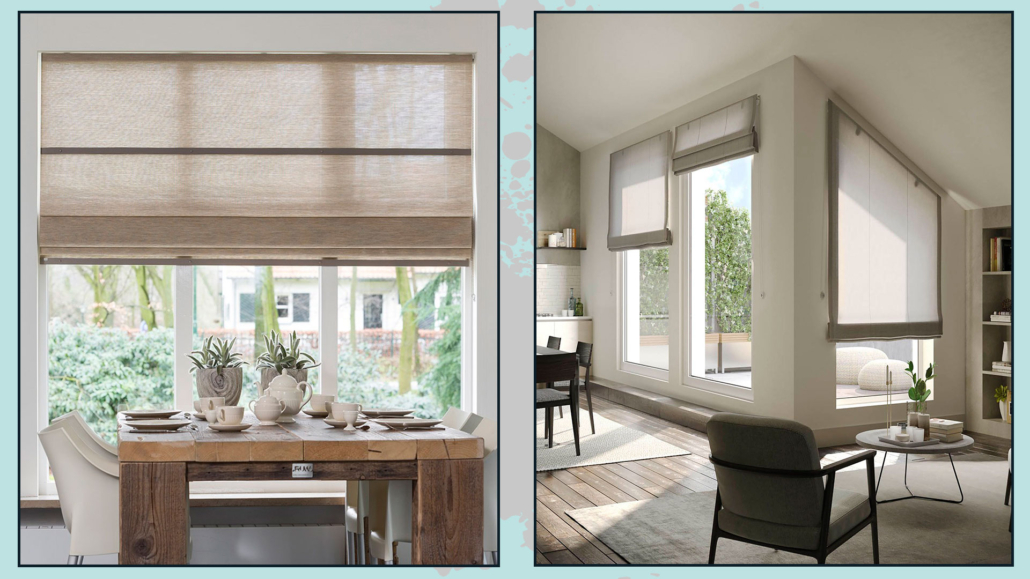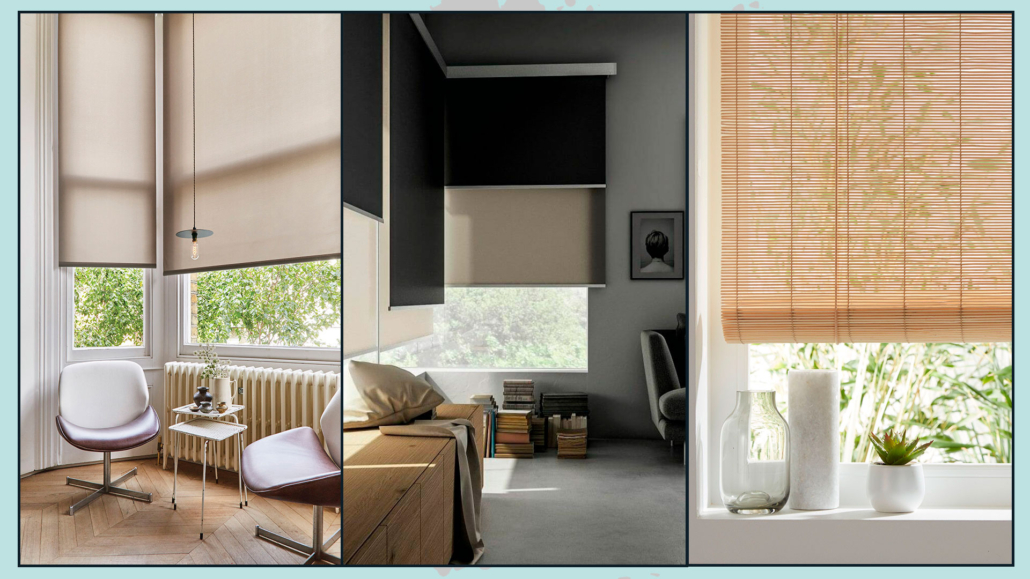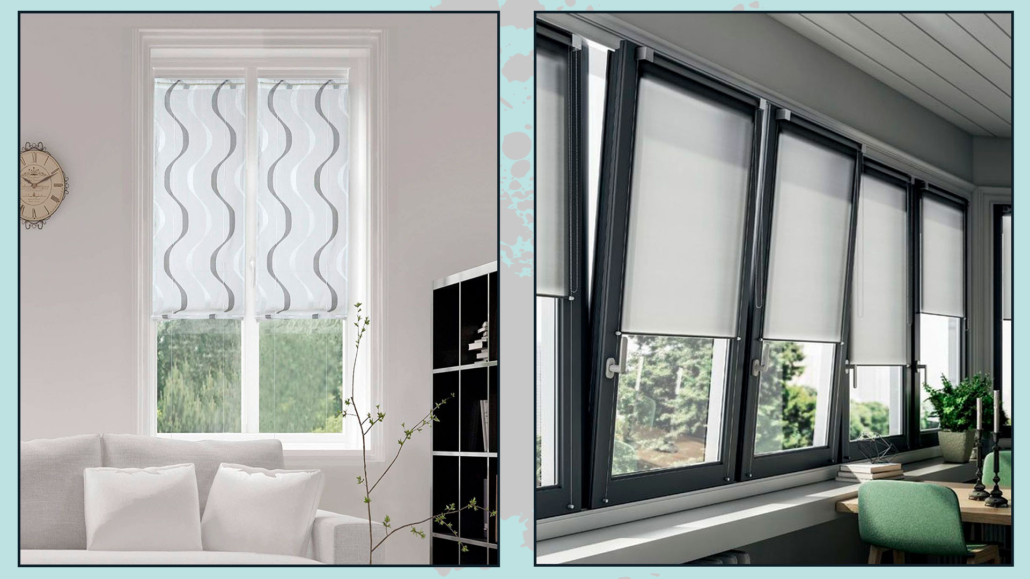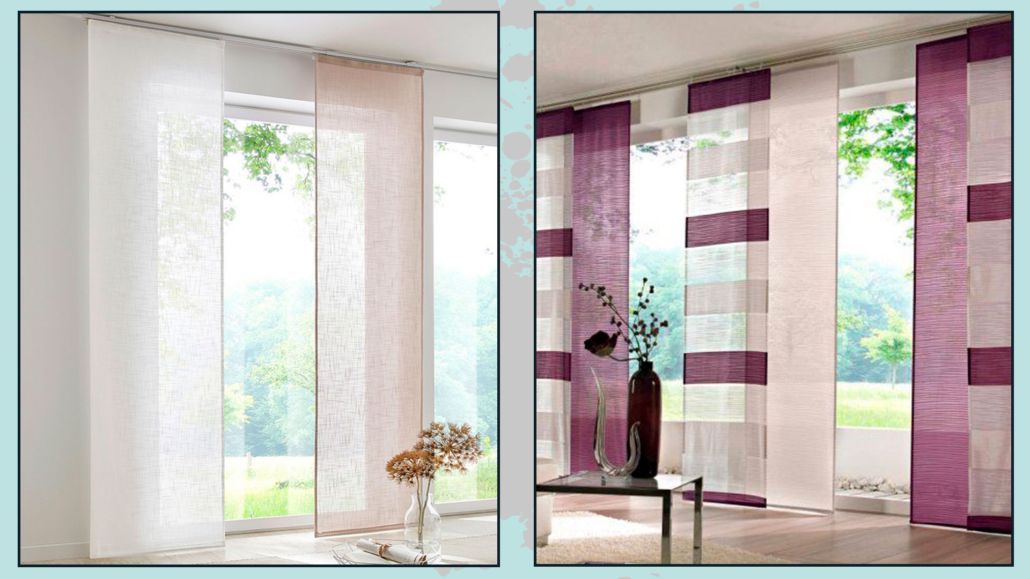Curtains, I always say, are really essential when furnishing and decorating a house!
This is because they dress the windows and bring warmth, textures, and wanting colors to the room.
Today I would like to look at some common mistakes you make when putting up curtains and also how to do it in special situations such as when there are radiators, you have an arched window, or the window is very close to a wall!
LET’S START WITH THE COMMON MISTAKES!
– HANG AT THE RIGHT HEIGHT
That is a mistake people often make: which is to hang curtains just above the window!
Putting the curtains at that level will not emphasize the heights by visually shrinking the room!
The curtain should be hung as close to the ceiling as possible; to give an idea about two-thirds of the space between the window and roof.
If the ceiling were really very high, the curtains should be hung at least 15-20 cm above the window!
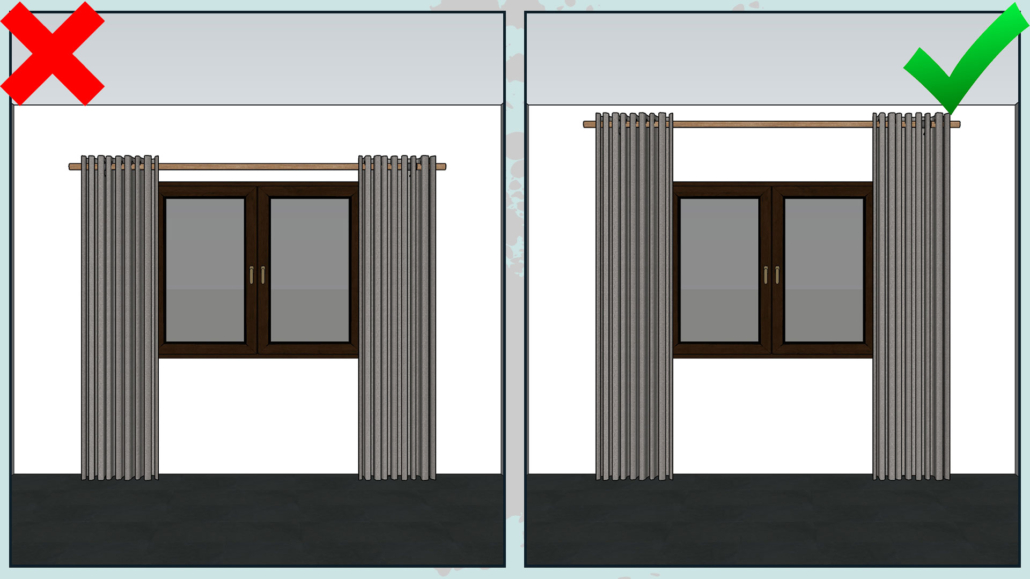
– PAY ATTENTION TO THE LENGTH OF THE ROD
Another mistake that is often made is to buy a rod the same size as the window or just slightly longer.
That, as with the previous point, somewhat shrinks the window, but mostly it is nonfunctional.
The curtains, when open, obstruct the passage of light because they overlap the windows!
You need to calculate at least 10-15 cm on each side so that the open curtain barely covers the window profile.
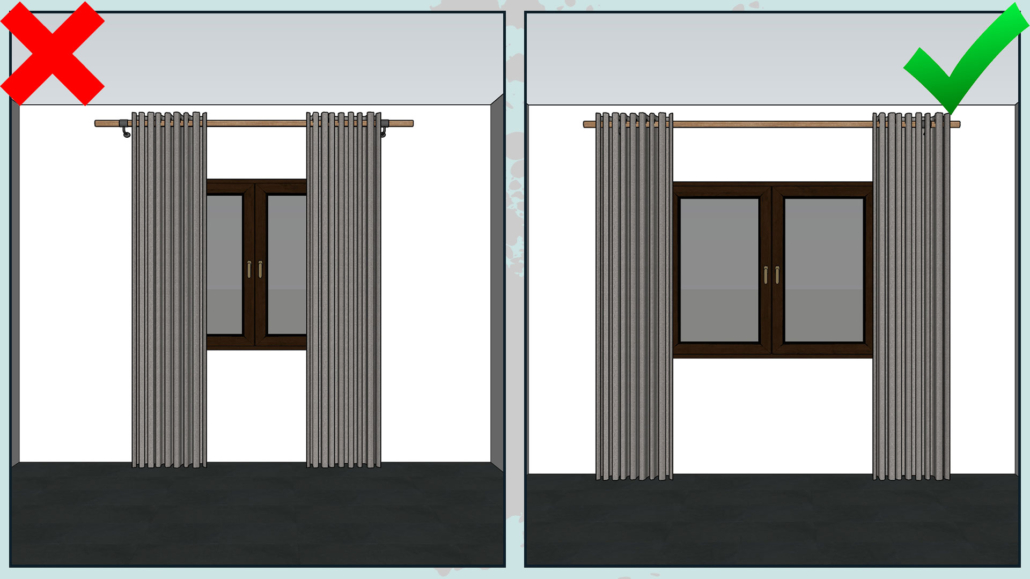
– CHOOSE THE RIGHT WIDTH PANEL!
Curtains should always be soft both when open and closed.
Choosing a too narrow panel will result in the curtain appearing drawn when the curtains are closed.
Conversely, if the panel is too wide, it will be heavy both when the curtains are closed and especially when they are open!
In either case, the curtains will look randomly placed and unstudied!
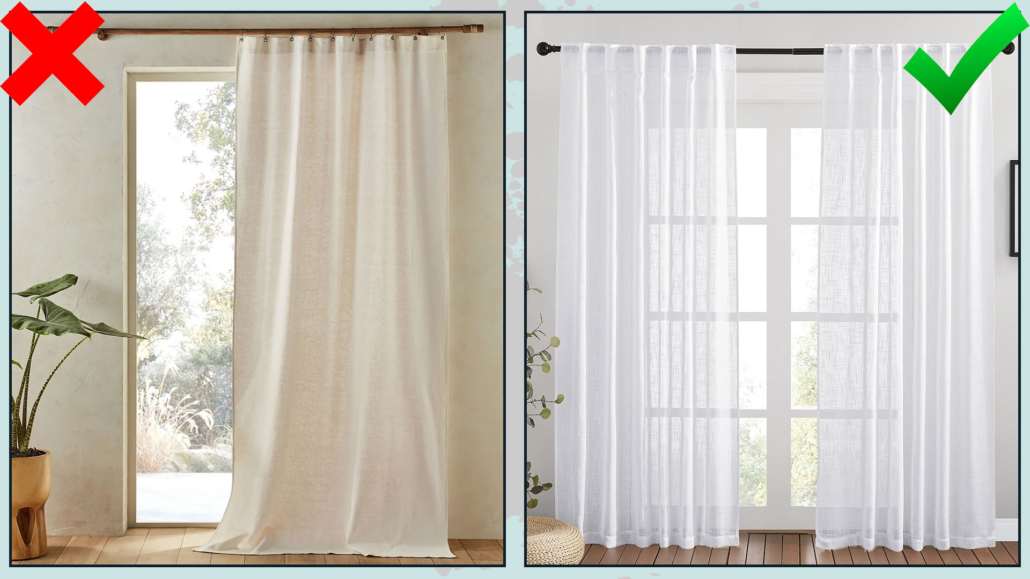
(credit: la redoute; amazon)
– TAKE GOOD MEASUREMENTS IN LENGTH!
Another very common mistake is to have curtains that are too short!
Doing this will visually shrink the room, and as with the previous point, the curtains will look as if they were placed without a proper study.
Depending on the style and especially how much they are opened and closed and the footfall in that area, three lengths can be studied:
– the curtain that skims the floor: this is ideal when curtains often open, in high footfall areas, and for an elegant yet casual look;
If you really don’t like the idea of it skimming the floor, you can make it slightly shorter, but no more than a couple of inches.
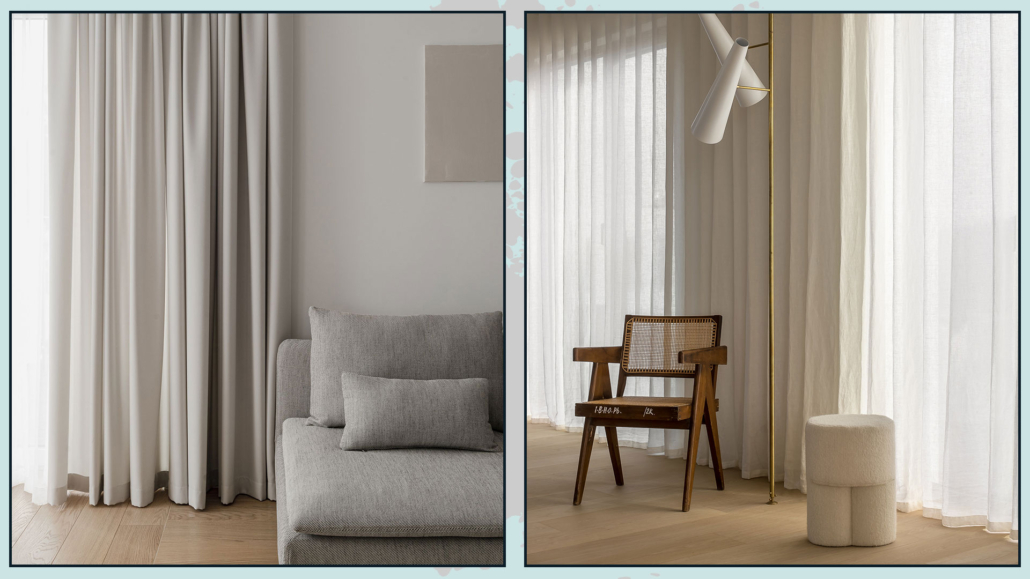
(credits: Pion studio; villedesign.be)
– make the curtain rest slightly: this means adding 1-2 cm to the curtain relative to the floor so that it caresses it.
It is ideal for giving an extra dynamic touch!
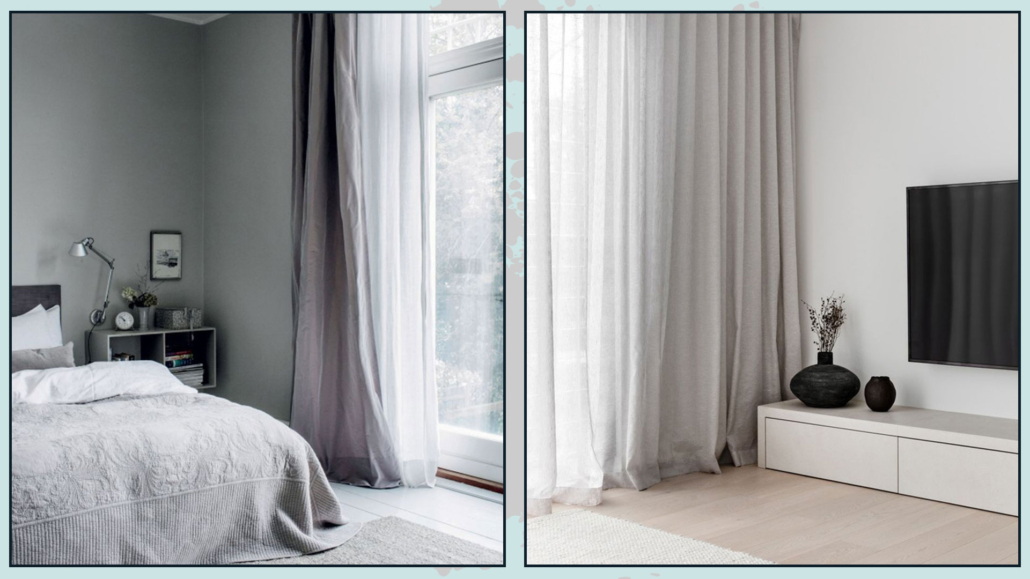
(credits: Cille Grut; Kate Lawrence Interiors)
– create a slight puff on the floor: to do this, you need to add 4-6 cm to the fabric relative to the floor.
That will give a touch of formality to the room.
Be careful not to overdo the puffing, first of all, because there is then the risk of stumbling in, but it will turn out anything but elegant!
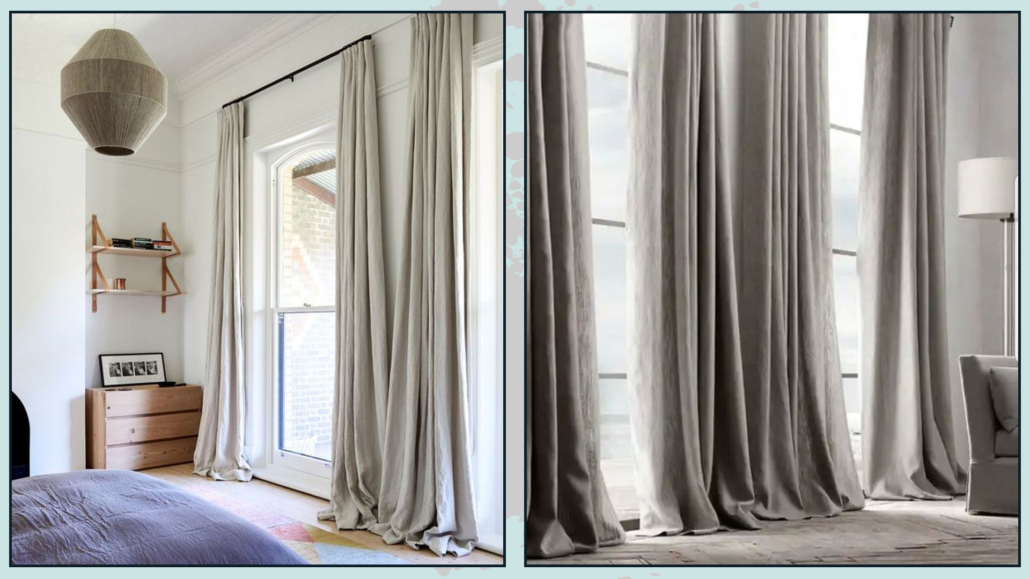
(credits: thedesignfiles.net;borgonovo1930.com)
HOW TO DO IN PARTICULAR SITUATIONS?
– WINDOWS NEAR THE WALL – ANGLE WINDOWS
You might happen to have windows near the wall that do not allow you to have that extra 10-15 cm for the rod: how to do it?
In this case, it might be advisable to decide to change the type of curtain, choosing packet or roller blinds, not necessarily glass blinds!
If you have two windows in a corner with not enough wall portion between them, it is best to avoid having 2 panels for each window; when open, they would overlap the window, not letting light through well!
If this is the case and you would still like to use drapery, the solution is there: use two different types of curtains!
That is, a roller or package to the window and then use an angle rod and use only one panel per window!
This simple trick will make the windows look like one, even if angular!
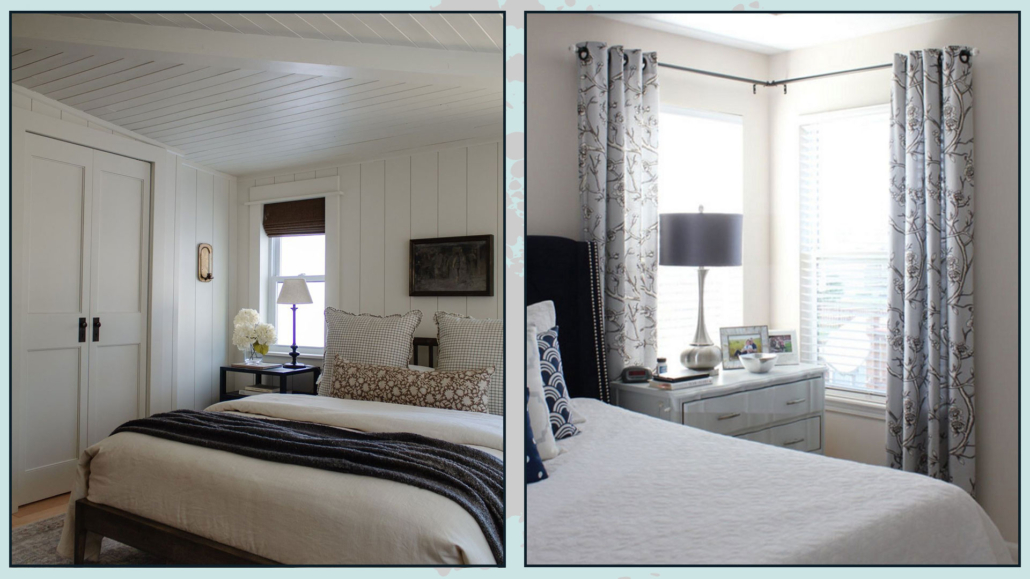
(credits: nadinestay.com; thehomesihavemade.com)
If, on the other hand, there is a good portion of the wall, possibly equal for the two windows, then double drapery panels will do!
I still recommend using two separate rods to emphasize each window.
If the corner window is a unique window indeed, I would recommend not using rods but ceiling tracks for a simpler and cleaner effect.
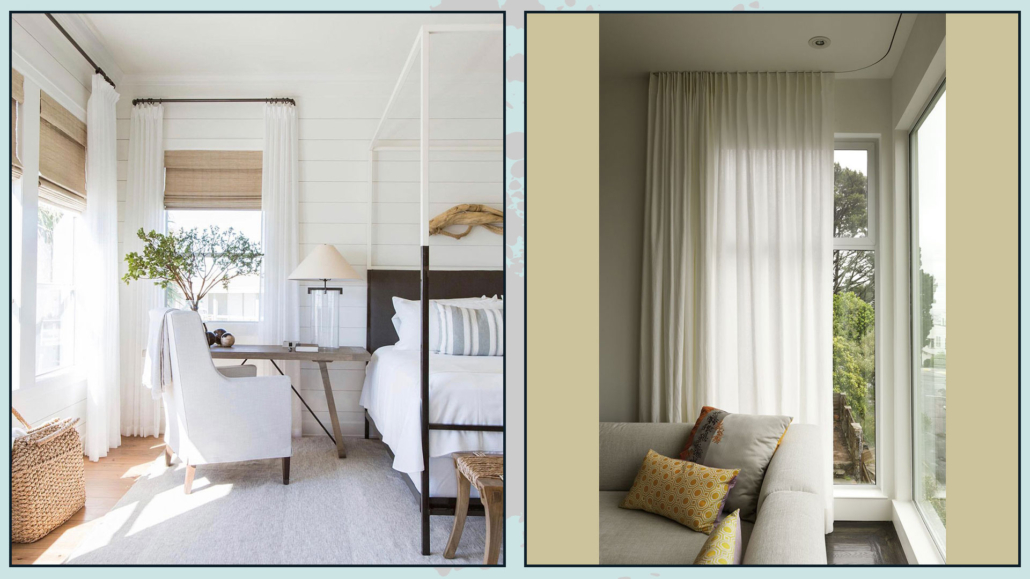
(credits: Marie Flanigan Interiors; Houzz.com)
– RADIATORS
Perhaps in the new generation houses not, but in most other homes, the radiators are put under the windows.
That presumably is so as not to steal valuable space from other walls.
Positioned this way, however, makes it more complicated to use curtains because if they cover it, obviously they block the passage of heat somewhat.
Again, it might be worthwhile to use two different types of curtains, that is use roller or packet curtains and drapery!
When the heaters are on, you will keep the drapery curtains open to let the heat in, but you will not have to give up privacy because you can pull down the other curtains!
Doing so will not block the heat but will not give up the elegance and fullness that drapery curtains give!
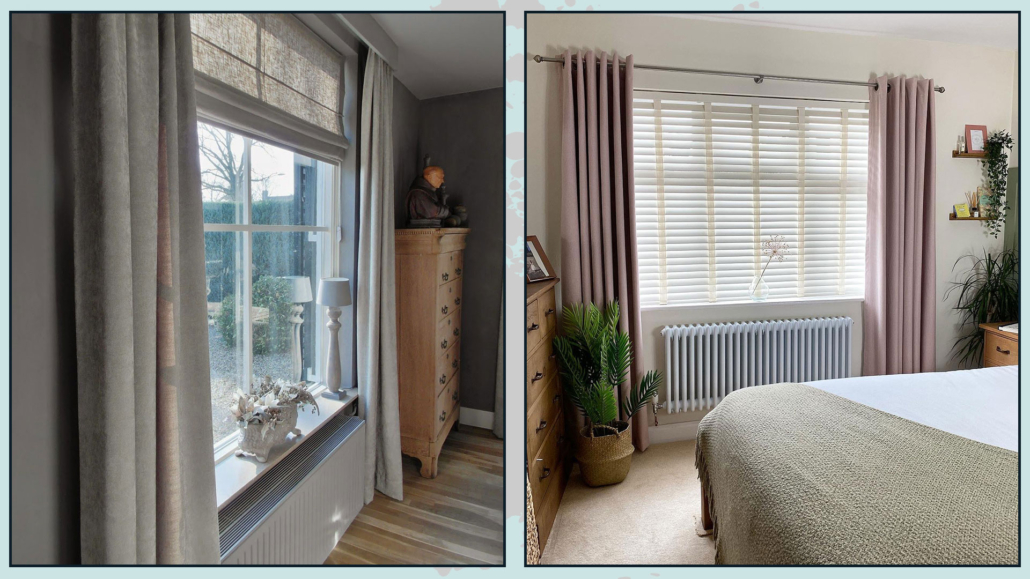
(credits: @Huisno26; Greenbank Interiors)
– ARCHED WINDOWS
When you have arched windows, the ideal is to treat them like regular windows and then put the rod over the arch as close to the ceiling as possible!
You can put the rod below the arch only in case the window, and consequently the ceiling, is a really high one.
The risk, if not, is to suffocate it by making the environment visually smaller.
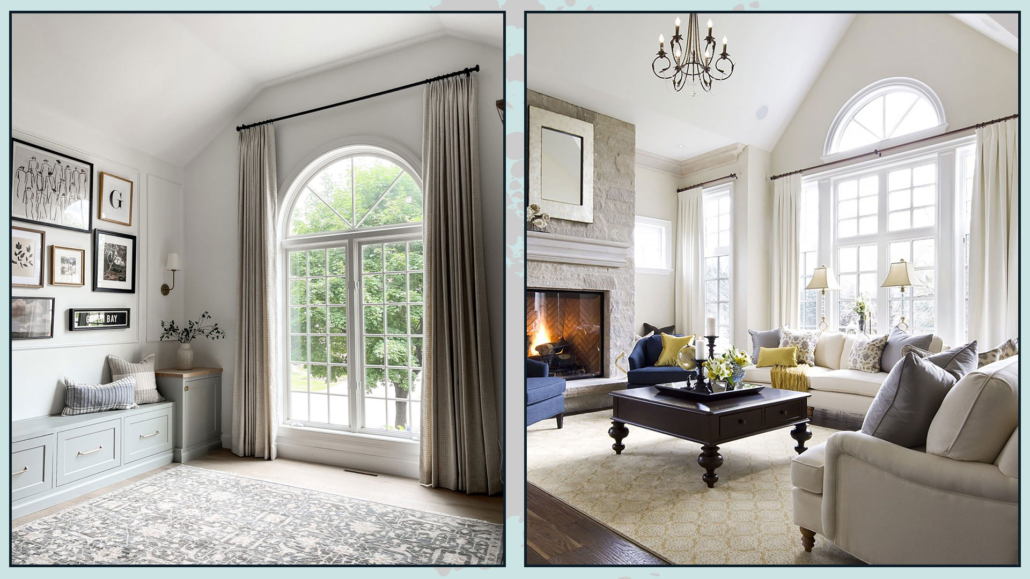
(credits: makingprettyspaces.com; Jane Lockhart Design)
I hope this article was helpful and you love it; in case, let me know in the comments!
Feel free to share it with anyone you think might be interested, I will be honored, and it will help me get my name out there.
If you feel that your home, or some environment of it, does not reflect you enough, do not wait any longer and book your consultancy!

